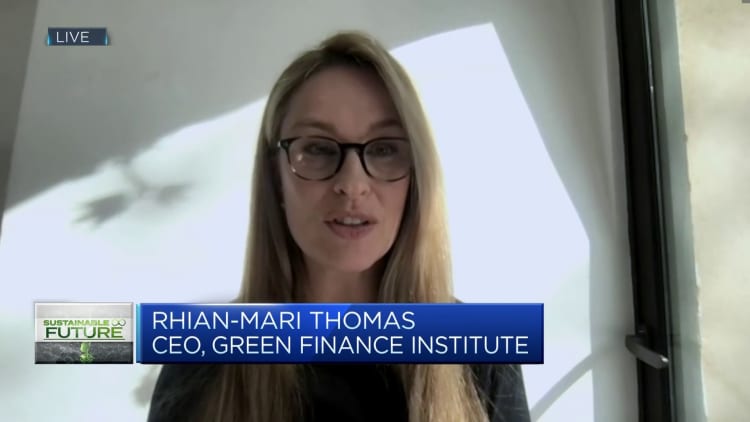
A BlackRock logo appears outside its offices in New York City.
Brendan McDermid | Reuters
black stone It is estimated that the world’s green energy transition will require US$4 trillion per year by the mid-2030s, calling for more public-private partnerships, especially in the Asia-Pacific region.
The forecast comes from BlackRock’s latest Investment Institute Transition Scenario, which analyzes how the low-carbon transition is most likely to proceed and its potential impact on investment portfolios.
Michael Dennis, head of alternative strategies and capital markets at BlackRock Asia Pacific, said the US$4 trillion figure is double the previous forecast of US$2 trillion per year and requires increased capital from both the public and private sectors.
“The Asia-Pacific region is really at the center of energy investment opportunities and we see this across multiple sectors in both developed and emerging markets,” Dennis said while speaking at Singapore’s annual Eco-Prosperity Week last week.
Is the capital outside?
Last year, $1.8 trillion was invested in projects related to the energy transition, up from $33 billion in 2004, and about $19 trillion has been invested so far, according to data compiled by BlackRock.
“The growth rate and the amount of investment are going in the right direction,” said Dennis, who leads BlackRock’s alternatives business in the region, which includes infrastructure, hedge funds and private equity.
“However, despite the growth in investment, we still have a $18 trillion shortfall by 2030,” he added.
Capital gaps exist across different risk categories: from low-risk investments in core energy infrastructure, to higher-risk investments such as later-stage venture capital and private equity.

Dennis said the funding to fill that gap already exists.
A BlackRock survey Last year, 200 institutional investors found that 56% planned to increase allocations for transformation in the next 1 to 3 years, and 46% of them stated that achieving transformation was their most important investment focus during the same period.
However, Dennis said achieving investment in private and public markets would require “coherence between government action, companies and partnerships with communities”.
In terms of public policy, legislation such as Inflation reduction methodSigned in the United States in August 2022, it has enabled the raising of billions in public funds for greenhouse gas reduction programs.

“In addition to this, we need to see policy changes around energy pricing and deregulation of energy markets,” Dennis said, adding that in emerging markets, about 60% of the capital required is expected to come from the private sector.
BlackRock sees hybrid finance as another key investment driver, particularly in emerging markets. According to the definition of “Blended Financing”, hybrid financing refers to the strategic use of development funds to raise additional funds for sustainable development. OECD.
“Blending finance is really critical, not only for the early stages of a project but also to make (green) assets investable within the current portfolio structure,” Dennis said, adding that it could help draw from the wider Access to trillions of dollars in capital markets.
BlackRock said other factors needed to achieve global green financing goals include developing better talent in different areas of the ecosystem and changing the risk framework for investing in green projects.





